Terry Doe welcomes back to the UK a genuine sporting supergun when he reviews the R.A.W. HM1000 X air rifle...
When it comes to Theoben airguns, I was what we refer to these days as an early adopter. It was the then new-fangled gas-ram that I adopted, and I owned several of them. A few years on from my first Theoben exposure, I was reviewing airguns for this magazine, and I was given an exclusive preview of a revolutionary ‘rapid’ reloading system that shuttled seven pellets to the breech as fast as I could crank a bolt. That rapid seven soon became the Theoben Rapid 7, and the rest is part of modern airgun history.
At the time, Theoben lived in Cambridge, and these days the company it became, Rapid Air Weapons, is firmly established in the U.S. Recently, RAW was acquired by Air Force, and that eventually lead to the appointment of a new U.K. distributor, Elite Optical, and you can find out more about them in a separate panel within this review. Right now, it’s my job to test the RAW HM1000 X pre-charged, multi-shot air rifle. You’ll need supergun money to buy one, so let’s see how much bang RAW, Air Force and Elite Optical are offering for all of those bucks.
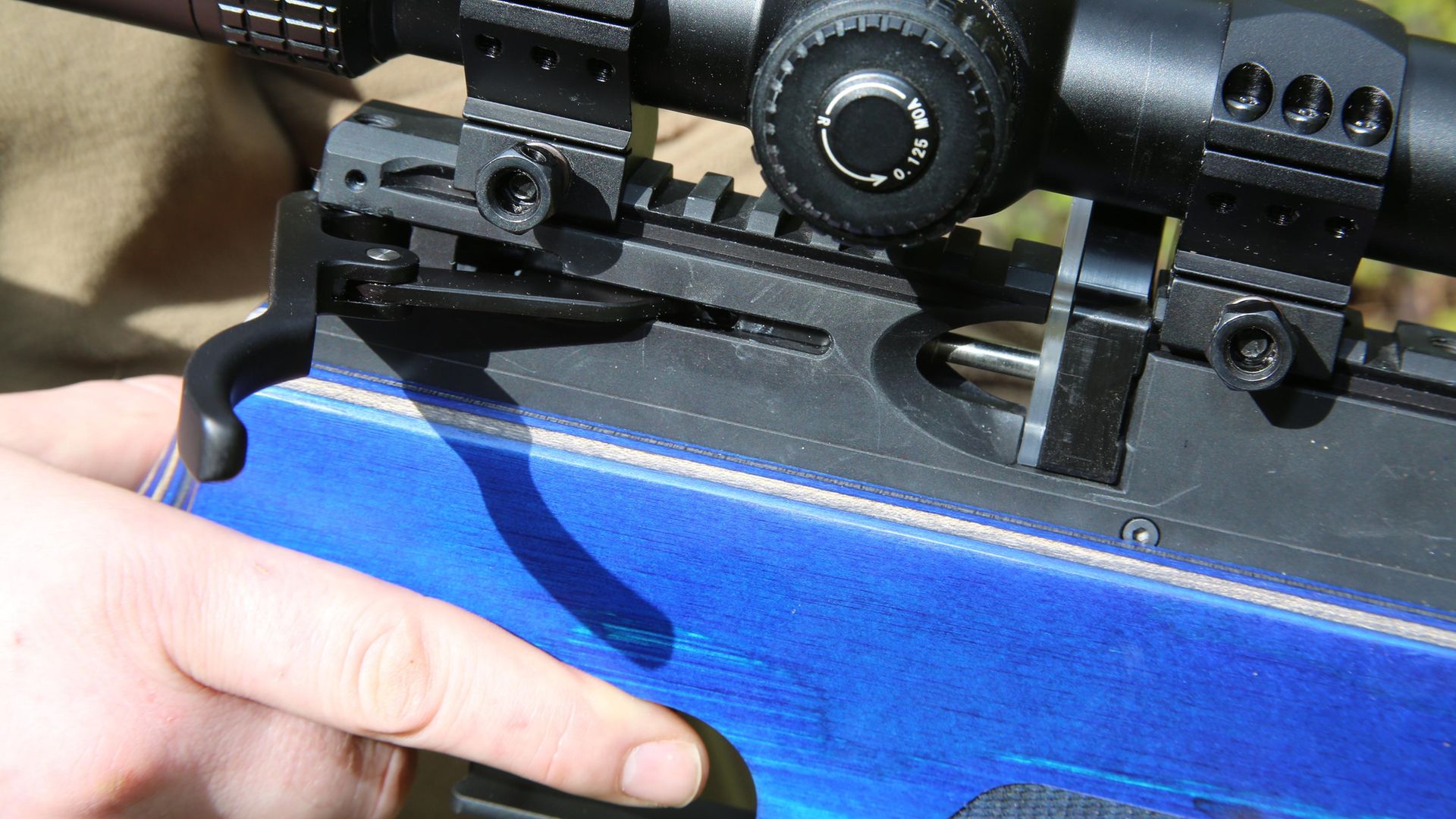 credit: Archant
credit: Archant
Overview
The test rifle is dressed in a blue-grey, laminate stock – one of five colour options – and there’s a ‘Chassis’ model available, with a tactical-style stock. More of that option next month because I have more than enough to consider with the model currently in the rack next to me.
It’s a fully-regulated, legal-limit version of the high-power HM1000 range that has achieved sub-inch groups at 100 yards in its various specifications. Those customers with the required documentation can choose from .177, .22, .25, .30 and even .357 calibres, with muzzle energies starting at the .177 test rifle’s 11-plus ft.lbs., all the way up to 130 ft.lbs. in the largest calibre. These bigger bore versions tend to run unchoked, 24-inch, Lothar Walther polygon barrels, which sets those rifles up for use with slugs as well as pellets.
The rifle in my rack has a 17-inch choked barrel, so I’ll be sticking to pellets for this one, at least initially, and such was my excitement in being reunited with one of these rifles, I took it straight to the test range and set a paper target out at 50 yards. Let’s go shot-for-shot, as it happened.
First shots – first groups
With 17 pellets slotted into the magazine that started the multi-shot revolution, I sat at the bench, settled behind the HM1000 X and slipped my first shot from one of these rifles for years. Ten shots later, I had refined the RAW’s zero, and after emptying the magazine to confirm things, I reloaded, resettled, and went for it.
With the magnification of the Delta Optical Stryker HD scope wound up to 30-times, I kept the range flags in my peripheral vision as reassurance of lack of side winds, and produced some of the best groups I’ve shot in years. One pellet after another clipped the main group, as I instantly found my rhythm and the breeze took an hour off. Within minutes, I had created three, five-shot clusters, each too small to accommodate the first knuckle of my forefinger.
These looked even more impressive when I cranked up the Stryker’s mag’ to its full 50 times, and although I still had two pellets left, I bottled it and smacked a one-inch spinner around, next to my paper target, rather than risk ruining those groups. That high mag’ showed that even those final two pellets had landed on top of each other. What a debut! Now, back to the nuts and bolts of this test.
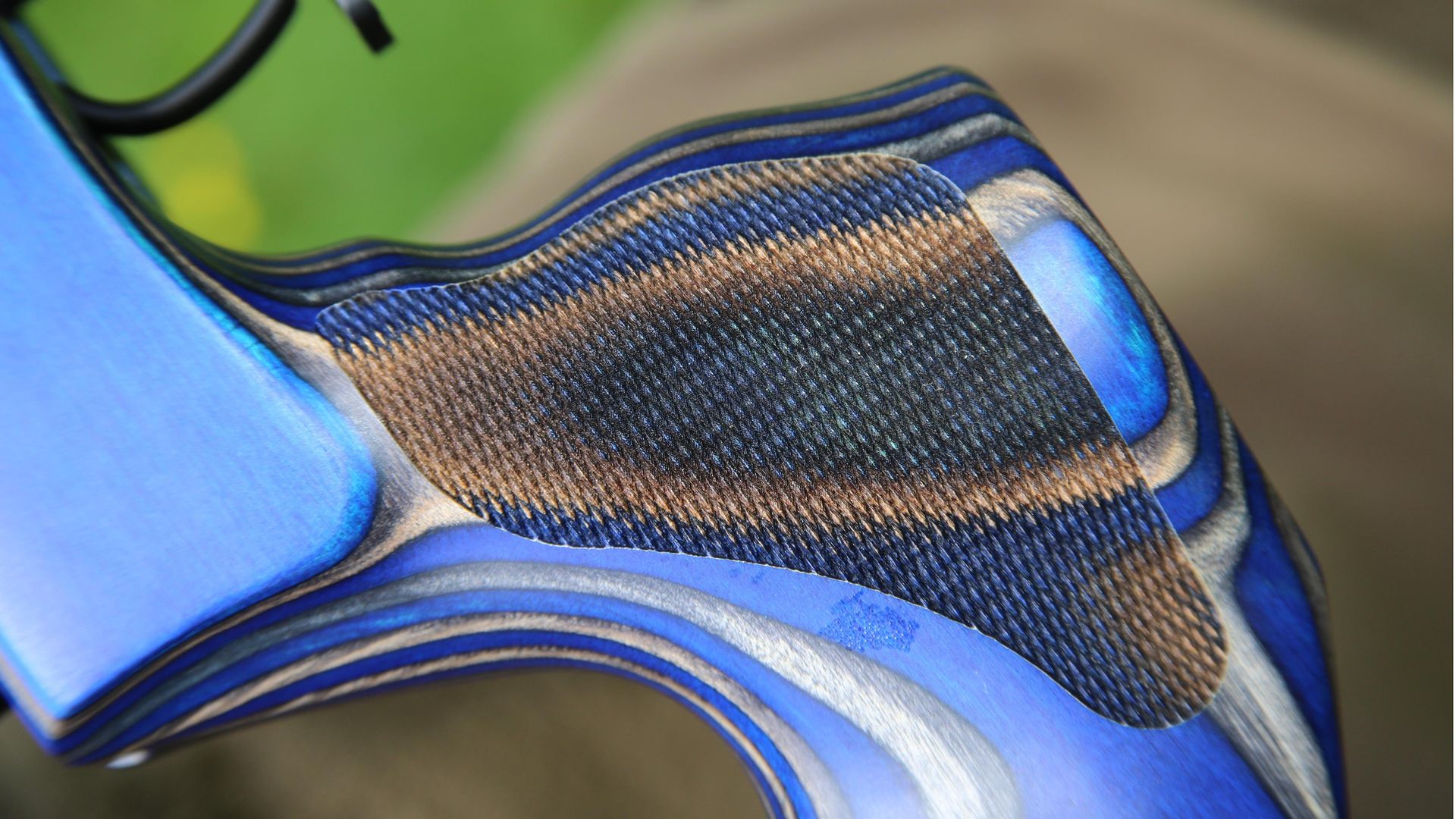
Theoben technology
As stated, this is a fully-regulated rifle, and it runs a very slightly optimised Theoben reg’, which in its high-power set-up, will provide a full 50 shots at 60 ft.lbs. in .25 calibre, from its 230-bar (3,300) charge. In the test rifle’s .177, charging its 480cc carbon-fibre buddy bottle to that pressure will yield well over 400 shots, but more important than the huge number of them, is the small number that testifies to the HM1000 regulator’s precision.
The average variation in feet-per-second over the first 50 shots, was just 9 f.p.s., and that was with unsorted Air Arms Diabolo Field straight from the tin. Then, there’s the trigger.
Fully in touch
One component that let down the very first Rapids was its ‘less than refined’ trigger. This was eventually rectified, and it has to be said that the current system is a full-on example of what a supergun’s trigger mechanism should be. As received, it was factory set at just 6oz, which is normally a little too fine for me, but rather than drop the stock and tweak the adjusters, I waited until full familiarity set in, and I was glad I did. I may yet make the test rifle’s trigger a little heavier, especially if I take the rifle into the hunting field, but for forensic-level testing, that ‘match’ setting is perfect.
At this price, I’d prefer to see an adjustable trigger blade, but the performance of the unit itself is exemplary. It’s backed by a manual, lever-type safety, just in front of the blade, and the combination of precision and safety is just about perfect.
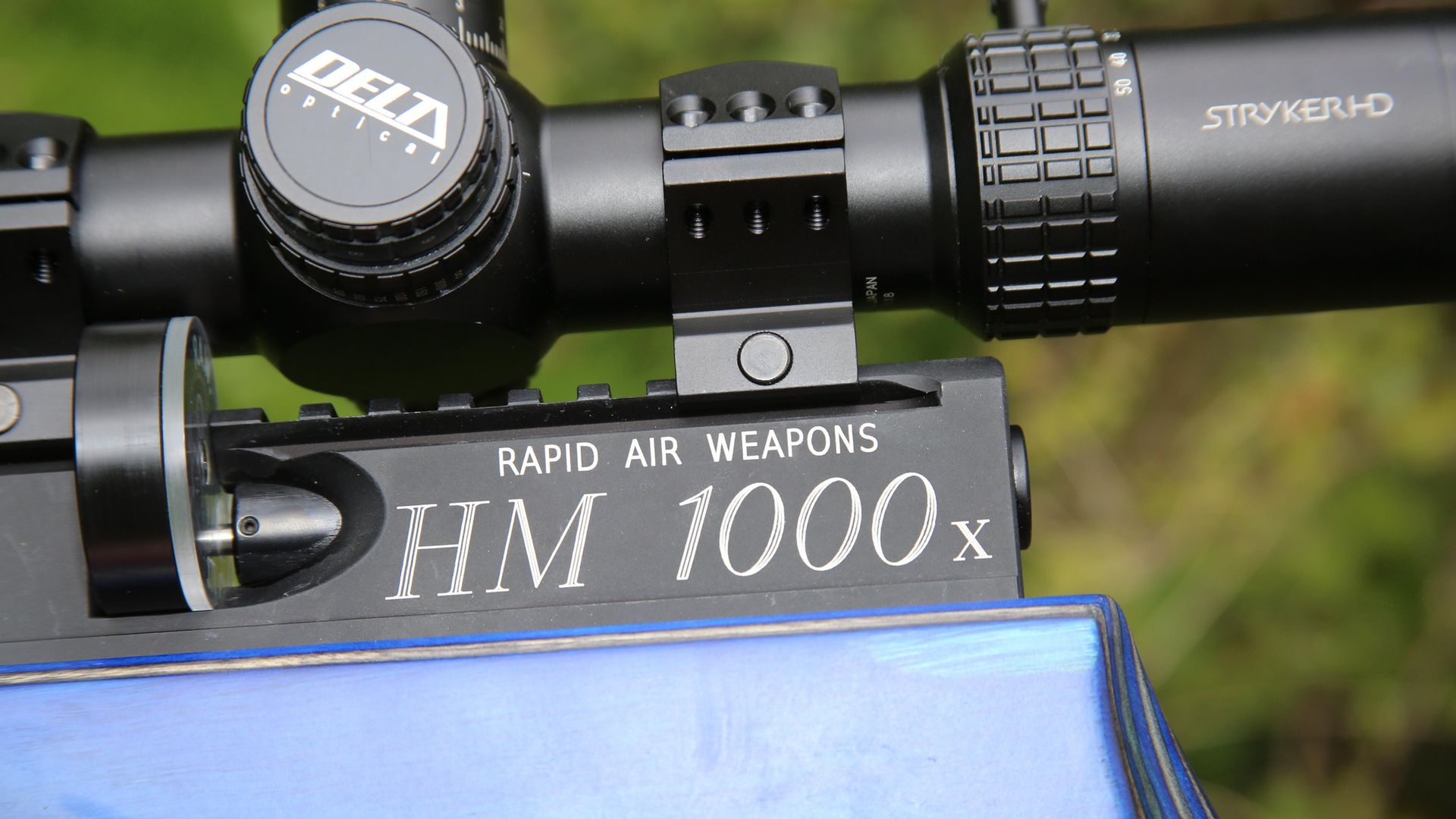 credit: Archant
credit: Archant
Loading the magazine
Although I’d done some pre-test prep’ – see the ‘Initial verdict’ section - it was like going back in time. While speaking to my front cover model, I instinctively took hold of the HM1000’s magazine, rotated its clear front cover in the direction of the arrow until it hit the ‘stop’, then with my finger underneath the mag’ to prevent the first pellet falling through, I dropped it in, then released the cover to hold the pellet in place. Next, I simply loaded each empty chamber, rotating the cover as I went, until the magazine was filled. So simple; no wonder it caught on.
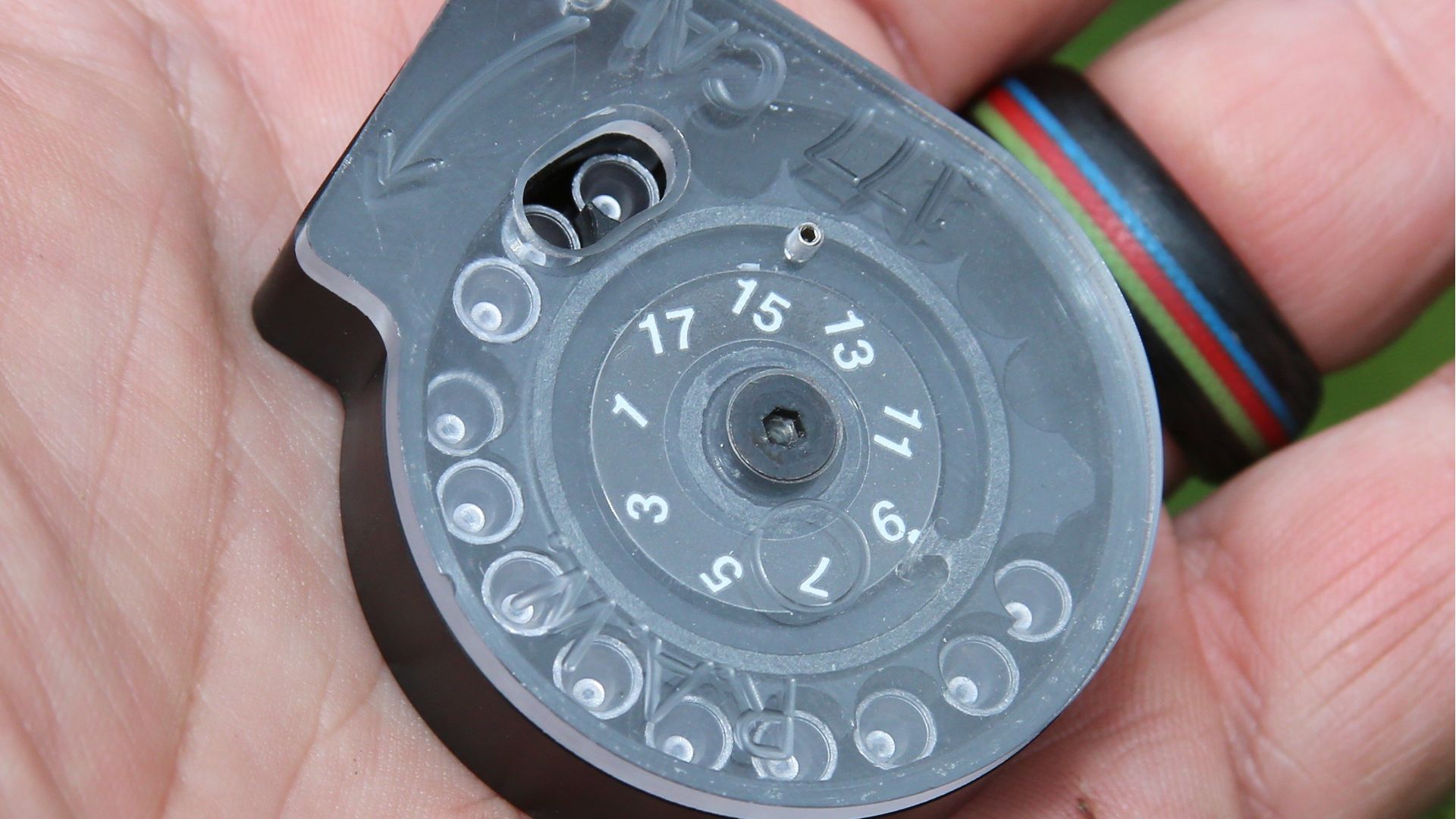 credit: Archant
credit: Archant
Studying the stock
Any stock that is stable, strong, and adjustable, has to score serious points in a review, and this one has all of those features. Truth to tell, it’s not the most elegant handle ever fitted to a high-performance air rifle, but its slab-sided solidity on the test bench helped to keep those cross hairs steady, even at the Stryker’s extreme magnification.
The basic design is ambidextrous, but without noticeable compromise, with a contoured, slightly raked grip, smothered in reassuringly sharp chequering. There’s more grip assistance running along the lower section of the rifle’s fore end, and there’s plenty of timber to accommodate any size of hand.
For me, though, the real stars are the height-adjustable cheek piece and that sliding butt pad. This is always a potent combination and I’ll be experimenting with every permutation it presents. The eye-relief of the Stryker HD seems fairly long, so I’ll take all the time I need to get it absolutely right. There’s no way I’ll be able to improve significantly on the very first groups I shot with this rifle, but there are stances, and circumstances, to explore, and a perfectly-mounted scope helps every time.
 credit: Archant
credit: Archant
Other points of interest
From the first cocking/loading cycle, I was impressed by the shortness of this rifle’s cocking arc, and therefore its hammer-throw. Once the lever meets resistance on its rearward travel, it needs to move just a few degrees to cock the action. Of course, there would be more travel involved if the action was one of the high-powered versions, but even so, it’s remarkable.
Closing the bolt fully is signalled by a soft, precise ‘click’ as the lever locks home to seal the breech. Make sure you feel that click, too, or the process won’t be complete.
Charging the HM1000 X’s reservoir comes courtesy of a Forster quick-connector that snaps onto the inlet valve spigot opposite the rifle’s on-board pressure gauge. The inlet is fully protected by a screw-on dust cover, and it’s perfectly positioned to make access easy for the user, and less so for rogue particles of dirt and grit.
The fully-floating, carbon-fibre shrouded barrel is threaded for a silencer, and as we’ve already seen, its performance is beyond question.
Inside facts and figures
Technical fact; the rifle has a +20 MOA Picatinny scope rail, plus an M-Lock accessory rail beneath the fore end, for the attachment of accessories, such as bipods and slings.
Here’s another important detail; each rifle is individually calibrated, its trigger set up, and velocity/accuracy checked before it leaves the factory. Martin Rutterford, the main man behind RAW, personally prepares each rifle’s regulator, plus its barrel and breech setup.
The regulators on the high-power models are user-adjustable, and you’ll find instructional videos on this, and other, important subjects on the Rapid Air Weapons website – details in the specs panel.
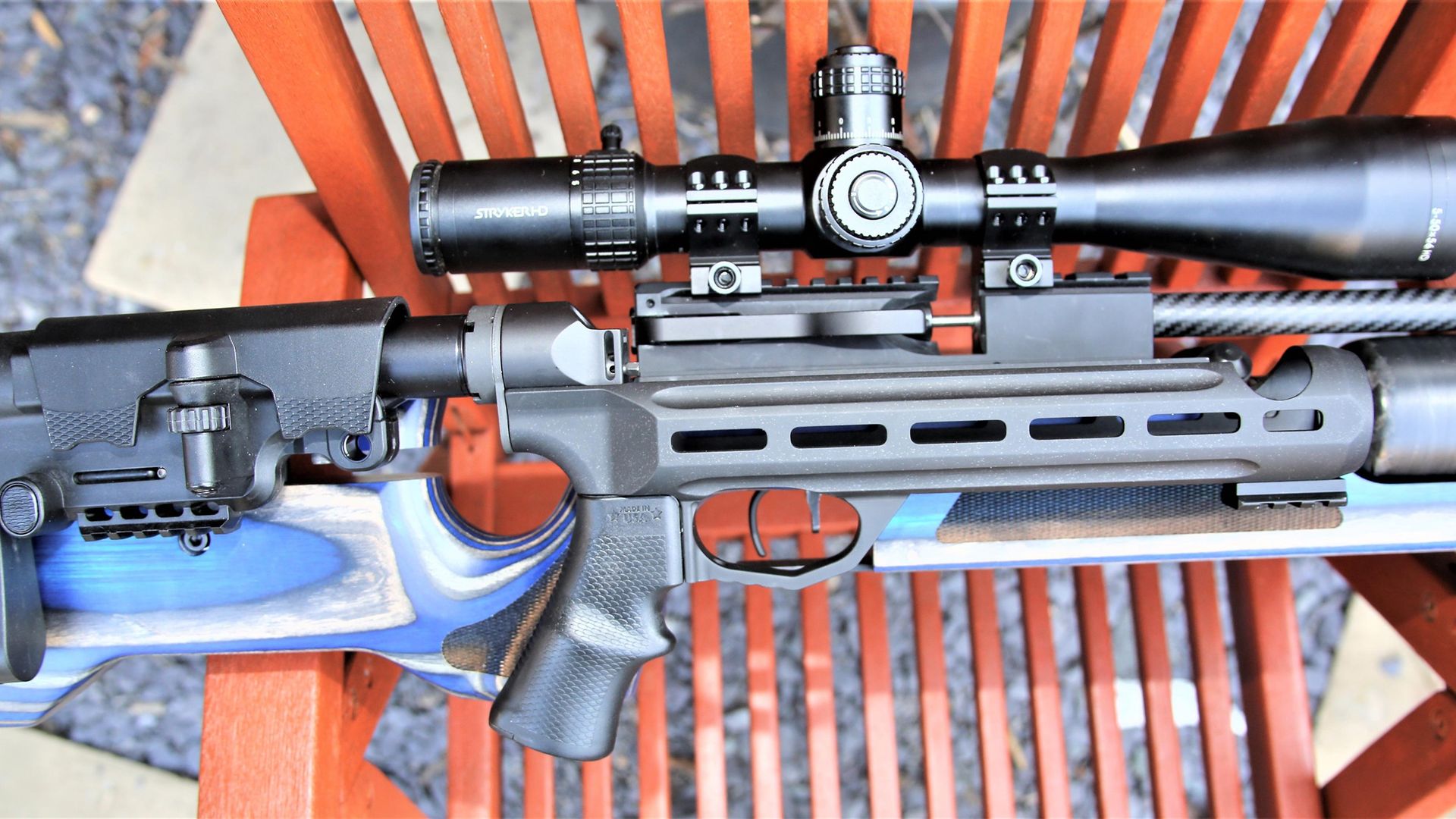 credit: Archant
credit: Archant
Initial verdict
When I knew I was going to be testing this rifle, I borrowed a friend’s Theoben Rapid 17, which although 20 years old, is in as-new condition and the closest rifle to the one you see in these pages. I was the first to test the Rapid 17, and it remains a truly impressive rifle, but it’s not in the same league as the RAW HM1000 X. Yes, of course this latest incarnation should represent significant progress, especially at this price, but there’s more to it than that.
My mate’s Rapid 17 was trying to be a precision version of the bomb-proof Rapid 7, whereas this HM1000 X isn’t trying to be anything other than an incredibly impressive shooting machine. Everything about it exists to help you push the boundaries of your sporting performance. This is no elegant sporter, designed around flowing lines. This is the difference between a Formula 1 race car, and the same company’s road-going vehicle, and it’s great to have it back in the UK.
See you next month, when I’ll fit that ‘Chassis’ stock, and find out more about the RAW HM1000 X and its various versions.
 credit: Archant
credit: Archant
Meet Elite Optical
Elite Optical is relatively new to the UK distribution scene but already represents some excellent brands and has quickly established a powerful network of dealers across the country. As the trade-focused sister company of Optics Warehouse - Elite Optical has a vast wealth of industry knowledge to call on and massive backup from the team at head office in Devon.
Sales Director, Stuart Grant, says: "We have grown quickly in the past few years and have partnered with some excellent brands, like HIK Micro Thermal, Optisan scopes and Accu-Tac bipods, and the opportunity to work with RAW to bring the Theoben name back to the UK and move Elite Optical in a new direction is very exciting!
"We have always worked hard to offer our dealers and their customers the highest levels of support to quickly resolve any issues with our products, and we also understand the importance of explaining the features of a product and will produce lots of ‘how-to’ videos to help shooters get the most out of their guns and gear.
"In addition to the sale of new guns, we will be offering a comprehensive range of spares to support the previous guns in the Theoben range. We will also be creating a UK based service centre with factory trained technicians to support the products. Finally, this is a bit geeky, but I used to buy this magazine when I was a teenager, so it’s really exciting to have one of our products on the cover!"
Model: HM1000 X
Manufacturer: Rapid Air Weapons
Country of origin: U.S.
Price: £2,149 (as shown) Chassis model £1,949
Type: Pre-charged pneumatic, fully-regulated, sidelever, multishot sporter
Calibre: .177, .22, .25, .30, .357
Cocking/loading: Sidelever via removable rotary multishot magazine
Trigger: Two-stage, adjustable match grade unit, backed by a manual, resettable safety
Stock type: Ambidextrous laminate with height-adjustable cheek piece and sliding butt pad
Weight: 7.6lbs (rifle only as shown)
Length: 41 in
Barrel: Lothar Walther match grade, 17 ins (432mm)
Shots per charge: Varies according to calibre and setup. Test rifle produces over 400 shots at 11-plus ft.lbs. from a 230 bar (3,300 psi) charge
Average muzzle energy: 11.5 ft.lbs.
Contact: Elite Optical www.eliteoptical.co.uk
Tel: 01803 658369
Web: www.rapidairweapons.com